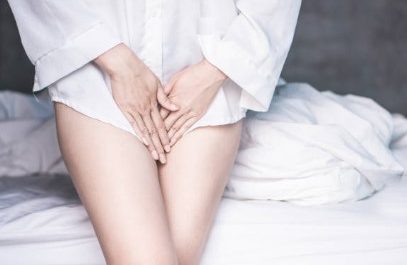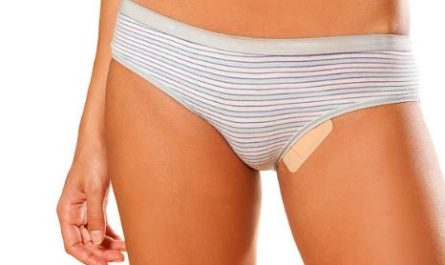A painful lump in the groin area of a female can have several possible causes. It’s important to consult a healthcare professional for an accurate diagnosis and appropriate treatment. Here are some potential causes of a painful lump in the groin area for females.
Ingrown hair or folliculitis
An ingrown hair or an infection of the hair follicles can lead to the formation of a painful lump in the groin area. It may appear as a red, swollen bump or a pus-filled pimple.
Lymphadenitis
Inflammation of the lymph nodes in the groin area can cause pain and swelling. This can be a result of an infection or an underlying medical condition.
Hernia
A hernia occurs when an organ or tissue protrudes through a weak spot in the abdominal wall. Inguinal hernias, in particular, can cause a painful lump in the groin area.
Lipoma
A lipoma is a non-cancerous growth composed of fat cells. It can develop under the skin and may present as a soft, movable lump that is usually painless. However, if it presses on nearby structures, it can cause discomfort or pain.
Abscess
An abscess is a localized collection of pus that forms due to an infection. If an abscess develops in the groin area, it can cause a painful lump.
Bartholin’s cyst or abscess
Bartholin’s glands are located on either side of the vaginal opening. If the ducts of these glands become blocked, it can lead to the development of a painful lump known as a Bartholin’s cyst. If the cyst becomes infected, it can turn into an abscess, which is usually accompanied by severe pain.
These are just a few potential causes of a painful lump in the groin area for females. It’s important to seek medical evaluation to determine the exact cause and receive appropriate treatment based on the diagnosis.
Example of Medication for Lymphadenitis causing Lump in Groin
Lymphadenitis is the inflammation of the lymph nodes, which can cause a lump in the groin area. The specific medication prescribed for lymphadenitis will depend on the underlying cause and severity of the condition. In general, treatment for lymphadenitis may include:
Antibiotics – If the lymphadenitis is caused by a bacterial infection, such as cellulitis or an infected wound, antibiotics may be prescribed. The choice of antibiotic will depend on the specific bacteria involved, and your healthcare provider will determine the appropriate medication and dosage.
Pain relievers – Over-the-counter pain relievers such as acetaminophen (Tylenol) or nonsteroidal anti-inflammatory drugs (NSAIDs) like ibuprofen (Advil, Motrin) can help alleviate pain and reduce inflammation associated with lymphadenitis.
Warm compresses – Applying warm compresses to the affected area can help reduce swelling and ease discomfort.
Supportive care – Resting, staying hydrated, and maintaining good hygiene practices can help support the body’s healing process and prevent further complications.
It’s important to note that these examples are general recommendations, and the specific medication and treatment plan should be determined by a healthcare professional after evaluating your condition. They will consider factors such as the cause of lymphadenitis, your overall health, and any other relevant medical conditions. Always follow your healthcare provider’s instructions and complete the full course of any prescribed medication to ensure effective treatment.
Example of Medication for Hernia causing Lump in Groin
Medication alone may not effectively treat a hernia since it involves a structural issue with the abdominal wall. However, medications can help manage symptoms associated with a hernia, such as discomfort or pain. It’s important to note that the primary treatment for a hernia is typically surgical repair. Nevertheless, here are some examples of medications that may be used to alleviate symptoms of a hernia:
Over-the-counter pain relievers – Nonsteroidal anti-inflammatory drugs (NSAIDs) such as ibuprofen (Advil, Motrin) or naproxen (Aleve) can help reduce pain and inflammation associated with a hernia. These medications are available without a prescription but should be used according to the recommended dosage and guidelines.
Antacids – If a hiatal hernia is causing symptoms of acid reflux or heartburn, antacids like aluminum hydroxide, magnesium hydroxide, or calcium carbonate can provide temporary relief by neutralizing stomach acid.
Acid reducers – Medications such as H2 blockers (e.g., ranitidine, famotidine) or proton pump inhibitors (e.g., omeprazole, esomeprazole) can help reduce the production of stomach acid. These medications are commonly used to manage symptoms associated with hiatal hernias or gastroesophageal reflux disease (GERD).
Stool softeners – If a hernia is causing constipation or difficulty with bowel movements, a stool softener like docusate sodium can help alleviate these symptoms by promoting easier passage of stools.
Remember, medication can help manage symptoms, but surgical intervention is typically necessary to repair a hernia and prevent potential complications. It’s important to consult with a healthcare professional, such as a surgeon, who can assess your specific situation and recommend the most appropriate treatment plan.
Example of Medication for Lypoma causing Lump in Groin
Lipomas are typically benign growths composed of fat cells. They are usually painless and do not require treatment unless they cause discomfort or cosmetic concerns. Medication alone is generally not an effective treatment for lipomas, and surgical removal is often recommended if necessary. However, in some cases, healthcare professionals may prescribe medication for symptomatic relief or to address underlying conditions. Here are some examples:
Pain relievers – Over-the-counter pain relievers like acetaminophen (Tylenol) or nonsteroidal anti-inflammatory drugs (NSAIDs) such as ibuprofen (Advil, Motrin) can help alleviate any discomfort or pain associated with the lipoma.
Steroid injections – In some instances, healthcare professionals may consider injecting a corticosteroid medication into the lipoma to reduce inflammation and shrink its size. This can be helpful in cases where the lipoma is causing discomfort or is interfering with normal bodily functions.
Conclusion
It’s important to note that these medications are typically used for symptomatic relief rather than directly treating the lipoma itself. Surgical removal is often the most effective and permanent solution for lipomas if they are causing significant problems or if the individual desires their removal for cosmetic reasons. Consultation with a healthcare professional is necessary to determine the most appropriate treatment plan for a lipoma in the groin area.




